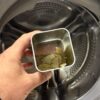Every day, more than just dreams accumulate between the sheets. Dead skin cells, body oils, sweat and even dust mites create a microscopic world that calls out for regular cleaning. Although many adhere to the rule of washing bedding at high temperatures, experts highlight a surprisingly different recommendation.
Night after night, invisible inhabitants, from viruses to mites, feed on dead skin. Cleaning experts from Fantastic Services warn that it is mites that can cause the most inconvenience in homes. Interestingly, however, high temperatures are not the key to cleanliness, as many believe.
The key to proper washing
Understanding the operation of your washing machine and choosing the right program are the foundations on which we build the path to clean bedding. It is also important to wash bedding separately to prevent possible damage to the delicate fabric. Experts also advise moderation in the use of detergents, as an excessive amount can damage and wear out the fabric.

For those who want an even more natural approach to washing bedding, there are alternative disinfection methods. One of the most effective is to use baking soda and white vinegar. Baking soda is great at removing unpleasant odors, while white vinegar acts as a natural disinfectant. This combination not only cleans but also refreshes bedding without exposing it to harmful chemicals. Add a cup of white vinegar to the wash cycle along with the bedding and let the machine fill with water. Then add half a cup of baking soda and run your normal wash cycle.
This approach is not only environmentally friendly, but also extends the life of your bedding while keeping it clean and fresh.
- Fabric type: Warm water of around 40°C is recommended for most fabrics, as this helps to remove dirt and natural body oils and helps to remove bacteria. For silk bedding, a lower temperature, around 30°C, is recommended, using a mild, non-biological detergent or a special detergent for silk.
- Bacteria and allergies: Washing bed linen at 60°C will kill most bacteria, which is especially important in cases such as hotels where the bed linen is used by many different people. If you are not concerned about bacteria, washing at lower temperatures such as 40°C would be adequate. For particularly dirty bedding, 60°C is better for removing microbes.
- Allergies and sensitivities: If you or someone in your household has allergies or sensitivities, washing your bedding in hot water can help remove allergens such as dust mites. Hot water (over 60°C) can effectively destroy mites and other microscopic organisms that can trigger allergies.
- Energy saving: Washing in hot water requires more energy compared to using cold or warm water. If you are concerned about reducing energy use and utility costs, washing with cold water or using a warm setting is a more energy efficient option.
Dance between fabric, temperature and bacteria and fungi
Choosing the ideal temperature for washing bed linen requires consideration of several factors. It is recommended to follow the instructions on the bedding label and balance the needs of cleanliness, energy saving and fabric preservation. Always choose the temperature and detergent that best suits your specific needs and species bedding, which you wash.







